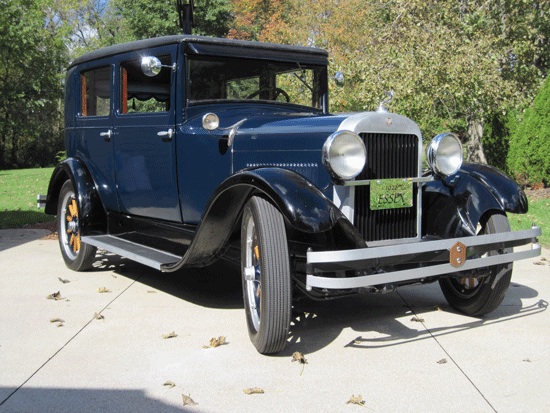Auto Factoids (#AutoFactoids) for Week of April 30th 2017
May 1, 1954 – American Motors Corp Formed
Formed from Nash-Kelvinator and Hudson merger. It was still referred to as Nash-Ramber and then AMC Ramber though the 1950’s. Styling didn’t change in the next few years and 1955-1956 Ramblers were badged as both Nashes and Hudsons, with no visible difference between the two. Rambler became a marque in its own right for the 1957 model year. The Nash and Hudson makes were continued as senior model only through 1957, after which all of AMC’s offerings were marketed as Ramblers.
 1958 4 Door Rambler Ad |
 1958 Rambler Statesman – 2Dr. |
May 2, 1918 – Chevrolet becomes part of GM.
GM was started Billy Durant by using the financing from his Durant-Dort Carriage Company to take over Buick Motor Company. He changed the name to General Motors (with Buick eventually becoming a separate brand later on). He soon brought in Oldsmobile, Cadillac and Oakland company. He started Chevrolet (in partnership with famous Swiss race car driver Louis Chevrolet) to help off set the financial issues as a separate company. Durant eventually started purchasing more Chevy stock and eventually took control and folded Chevy into GM.
May 3, 1948 – Willys Jeepster Phaeton debuts.
These were mostly powered by the Inline 4 Cylinder, L-head engine. (134.2 cid, bore 3.13, stroke 4.38, compression 6.48:1 for about 63hp). Power got to the wheels via a 3 speed transmission. All the Willys had the same wheelbase length of 104″ with the total length of the Phaeton being 174.8″. Production was not well-defined through out all the models offered but approximately, 10,326 Phaeton were build.

1948 Jeepster Phaeton
May 3, 1949 – Packard’s 50th Anniversary 2000 Gold Packards.
These were Dealer Driveway. These weren’t “gold” cars but they were painted in a special paint code of Gold. Each were powered with 327 c.i.d., 150 hp engine. The number of ’49 2000 Gold Packards produced was about 600 (some say 1500) . The event was held at was the Utica Proving Grounds. Currently none are known to exists although you can see a few “gold painted” 49 Packards pop up from time to time.
 Here is a 49 Packard – painted gold. Is it one of the Drive-Aways? Slight chance. |
 Packard’s Utica Proving Grounds. |
May 4, 1923 First Le Mans 24 hour race.
The first Le Mans 24 Hour race was held just outside Le Mans, France. Initial the race was limited to ‘production’ cars and two drivers, now they require 3 drivers per car and the of course these cars aren’t in your dealers show rooms. The race was won by one of the French teams – André Lagache and Léonard driving a Chenard et Walcker with 3.0L I4 engine.

This is an awesome looking car!!!
May 6, 1928 Chrysler debuts the De Soto. The De Soto wasn’t available to the public until 1929. It sported an L-head six cylinder engine, displacing 174.9 CID and producing about 55hp.

First De Soto
Thanks for reading.
Tim
Average Guy’s Car Restorations, Mods, and Racing
#AutoFactoids – Average Guy’s Car Restoration, Mods and Racing
Auto Factoids for the Week of 2/22/2015 – Firebird, Thunderbird, AMX

































